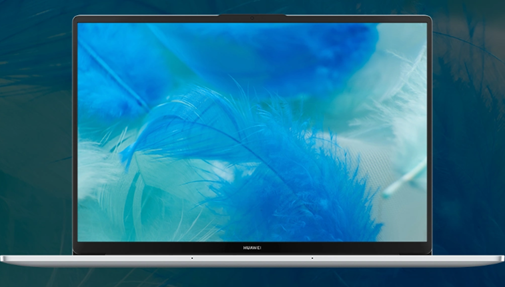Mobile World Congress 2022 Delivers In Three Key Areas
It has been two seemingly long years since the last in-person Mobile World Congress (MWC) Barcelona. I had the good fortune to attend this year, and the show did not disappoint. Though the attendance was smaller than in the past (the GSMA final estimate was about 60,000), all the stalwart companies were in attendance. I spent considerable time with infrastructure providers and mobile network operators at the event and wanted to share the most compelling things I heard in the realm of private cellular networking, vRAN and Open RAN and carrier enablement and services.
Private cellular networking
In the lead up to the show, I predicted on my weekly podcast, the G2 on 5G, that it would serve as a coming-out party for private cellular networking. It turns out that I was spot on, and there were private cellular networking announcements from multiple companies. Cisco provided further details on its private-5G-as-a-service offering. The networking giant will provide the mobile core technology, while its partners, Airspan Networks and JMA Wireless, provide the Open RAN architecture. Cisco’s proposition is compelling, given its deep IoT capabilities, its broad portfolio of industrial routers, switches and gateways and its industrial security and management applications. I believe that over half of the addressable market for private cellular networking is manufacturing automation, which Cisco should be well-positioned to capitalize on. I also like that Cisco is facilitating the management of its new 5G service alongside Wi-Fi. The reality is that Wi-Fi will continue to dominate the traditional IT carpeted areas of enterprises, while 5G cellular connectivity provides the necessary propagation, throughput and latency for OT environments.
Hewlett Packard Enterprise (HPE) also provided details on its private-5G-as-a-service offering, not surprisingly, as a part of its GreenLake IT consumption services platform. HPE has arguably the most mature set of subscription offerings, including networking-as-a-service. 5G-as-a-service is a logical compliment. In partnering with Airspan Networks, the HPE solution parallels that of Cisco's, from a RAN perspective. However, I believe HPE’s 5G superpower is software. HPE offers a mature and tested 5G Core Stack platform, along with the robust management capabilities of its HPE Service Director offering. Additionally, HPE is already an edge enablement leader with its Edgeline portfolio. I expect mobile edge computing will supercharge 5G use cases across many industries, and HPE has a portfolio aligned to deliver on many, if not all fronts.
HPE has also decided to deploy multiple routes to market as it vies for its share of the private networking opportunity. In addition to the GreenLake 5G service, the company's Aruba division is partnering with startup Celona to offer a turnkey LTE and 5G core and radio offering to the HPE customer base. I continue to be impressed with Celona's focus on ease of deployment and management—I believe its 5G LAN platform is as easy to manage as Wi-Fi. Apparently Verizon agrees, judging by its MWC announcement that it will leverage Celona's platform as a private label within the Verizon On-Site 5G portfolio.
vRAN and Open RAN
Samsung Networks is also emerging as a leader in enabling operator network deployment agility, offering a broad set of vRAN and Open RAN capabilities. At MWC, Samsung made several announcements, including a 5G vRAN ecosystem it says will advance innovation and accelerate deployment. Samsung will collaborate with a "who's who" of companies, including Dell Technologies, HPE, Intel, Red Hat and Wind River. From an operator perspective, I believe success lies in commercial vRAN deployments versus proof-of-concept pilots. To this end, Samsung continues to build upon its previous vRAN wins last year, including KDDI in Japan and Verizon in the United States. I spent time with Samsung before MWC, discussing its vRAN and Open RAN capabilities. If interested, you can find that fireside chat here. Notably, Samsung won the Global Mobile (GLOMO) CTO’s Choice Award for its fully virtualized 5G RAN solution at MWC this year. That award is another proof point that demonstrates the infrastructure provider’s capabilities in vRAN.
MORE FROMFORBES ADVISORByAmy DaniseEditorByAmy DaniseEditor
Marvell continues to be a standout in the overall 5G ecosystem, powering much of the underlying infrastructure platforms with its silicon. Notably, it announced an Open RAN accelerator card design win at MWC, developed in partnership with Dell Technologies. It is a smart move for Dell, and I believe this purpose-build piece of hardware will strengthen its telecom portfolio and complement its PowerEdge server line. The value lies in the accelerator card’s capability to free up valuable CPU compute cycles to support telecom workloads more efficiently. Dell will need to continue to make these kinds of investments if it hopes to compete with HPE in the long term. HPE has a much more mature set of telco-grade offerings and significant 5G lab capabilities aimed at speeding operator deployment and lowering capital and operation expenditures.
Intel is also doing its part to support the vRAN and Open RAN ecosystem. Before MWC, my colleague and 5G partner-in-crime Anshel Sag and I spoke with Intel about several announcements related to silicon and the developer ecosystem. If interested, you can find that conversation here. Also worth noting was Qualcomm’s announcement that it would help Mavenir develop and optimize its vDU RAN software stack on Qualcomm's recently announced X100 5G RAN accelerator card. If you are interested in learning more about the Qualcomm offering, I analyzed the details in this Forbes article.
From an Open RAN perspective, there was probably no other company as visible as Rakuten Symphony—it felt like there were dozens of announcements. Still, I have been skeptical of operator acceptance of Symphony given the platform is born out of Rakuten Japan's efforts to deploy Open RAN. It has not been an easy journey for Rakuten, but I give the company credit for working through the complex challenges of disaggregated RAN. Its announcements at MWC included:
It will be interesting to see the follow-on activities between Symphony, operators, and infrastructure providers. Suffice it to say, Rakuten Symphony seems to be gaining tremendous momentum with respect to Open RAN deployments.
Carrier enablement and services highlights
AT&T was front and center at MWC, and in addition to the previously mentioned partnership with Rakuten Symphony, the operator made several announcements. One involves collaboration with Intel and its FlexRAN software stack and Xeon processors to deliver an elastic 5G RAN capability. At the event, I spoke with Gordon Mansfield, VP of Mobility and Access Architecture, about deploying cloud-native architectures to dynamically scale computational power when needed. From a RAN perspective, it allows AT&T to deploy what is termed advanced DU pooling to drive sustainability and improved efficiency. The efficiency comes from its ability to allow 5G radio to distribute baseband processing for user devices across multiple servers. This provides a mechanism to intelligently distribute and redistribute traffic instantly, without any disruption to subscribers and power down servers if traffic levels fall. On the surface, it looks compelling and like it could Cloud RAN to the next level. The other AT&T announcement worth mentioning is the operator's Private 5G Edge platform. In partnership with Microsoft Azure, the two companies will provide a private 5G service supercharged with edge computing enablement. I was impressed by the partnership’s focus on specific use cases, its flexibility with public network slicing and its support for the CBRS/ OnGo spectrum deployment. In my mind, AT&T’s edge strategy looks much stronger than what Verizon is doing with AWS to enable edge computing ahead of its 5G mid-band CBAND deployments.
Before MWC, T-Mobile announced its T IoT platform. T-Mobile and parent company Deutsche Telekom hope to solve the complexities of IoT deployments by harmonizing its program's sale, support and enterprise management on a global basis. I like the fact that there is a wide range of access supported, including LTE, 5G and NB-IoT. Pricing is flexible, with traditional and flat-rate unlimited plans. Most compelling, perhaps, is the visibility and ease-of-management offered by the solution’s single pane of glass interface. It is a bold vision and, in my mind, the most significant step forward for T-Mobile U.S. to compete for enterprise services among its incumbent competitors.
Wrapping up
As my reintroduction to the event circuit post-pandemic, MWC 2022 did not disappoint. It was marked by significant momentum in private cellular networking, the evolution of the RAN, and operator enablement and services. Personally, one of the highlights was my meeting and spending time with Marc Rouanne, who leads Dish's effort to build a cloud-native, highly virtualized greenfield 5G network stateside. Much like Rakuten in Japan, Mr. Rouanne is leaning heavily into an emerging ecosystem of partners (many mentioned in this article) to deliver a highly agile, automated mobile network for Dish. It’s not without complexity, but what results from operators, silicon providers, and infrastructure providers alike will drive innovation, sustainability and disruptive 5G service delivery. I am personally looking forward to what unfolds this year and beyond.
Disclosure: My firm, Moor Insights & Strategy, like all research and analyst firms, provides, or has provided research, analysis, advising, and/or consulting to many high-tech companies in the industry including AT&T, Celona, Cisco, Dell Technologies, HPE, Intel, Marvell, Qualcomm, Red Hat, Samsung, T-Mobile, cited, or related to this article. I do not hold any equity positions with any companies cited in this column.








